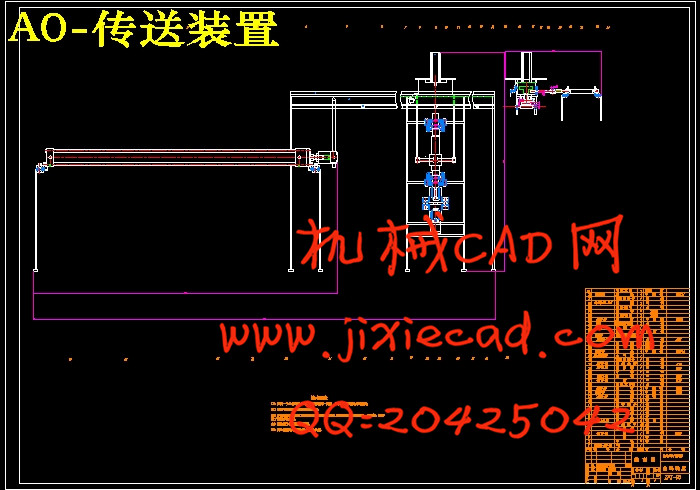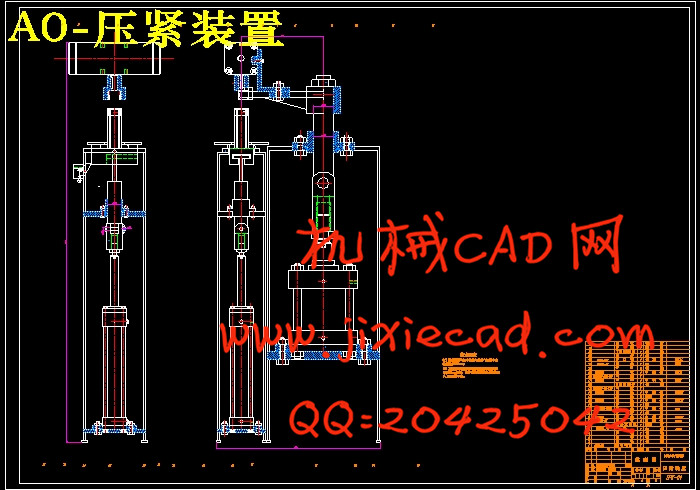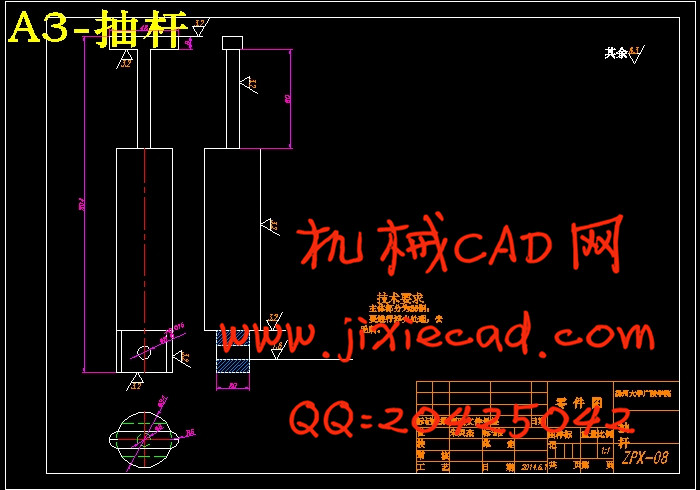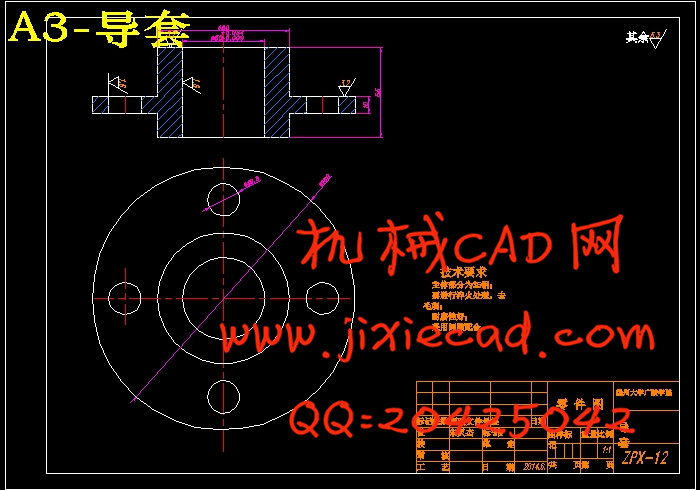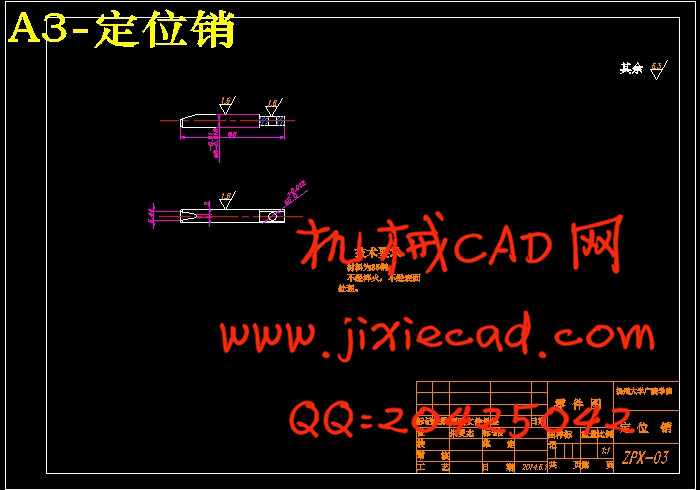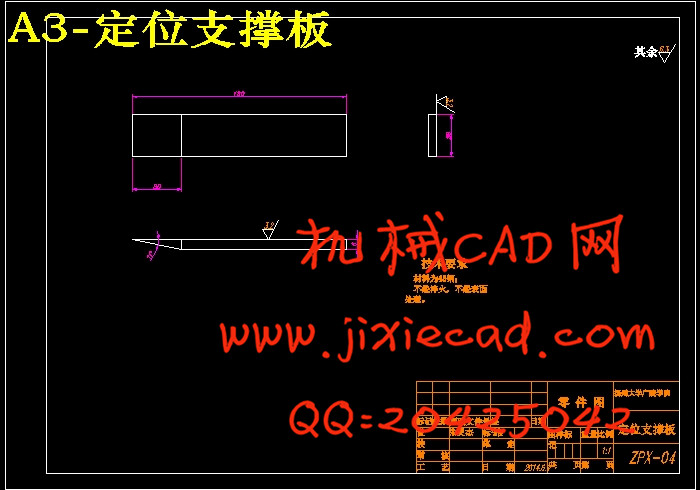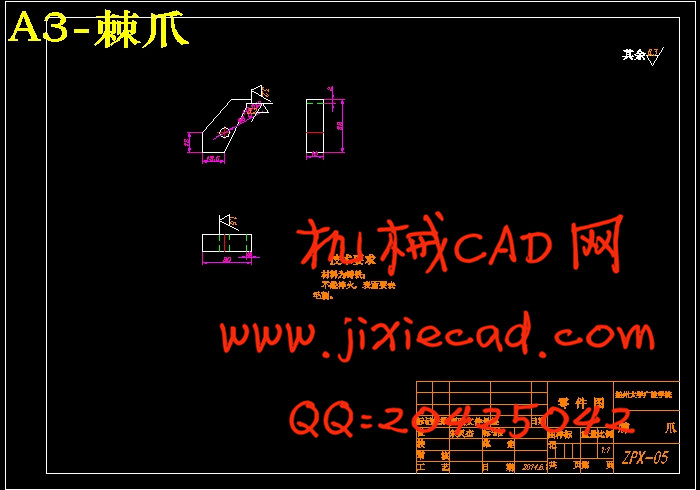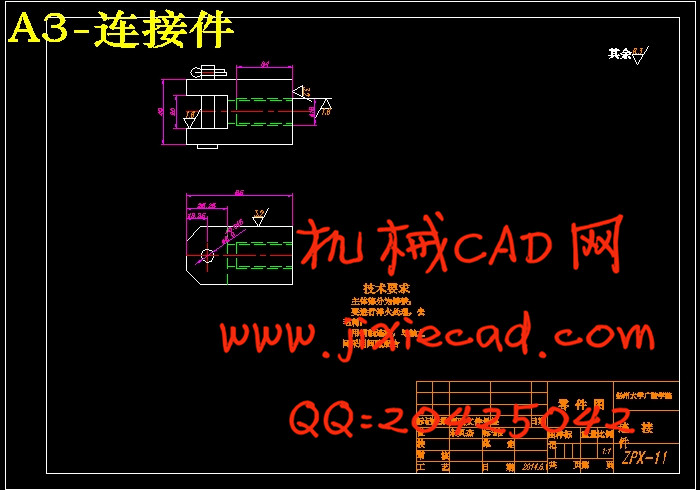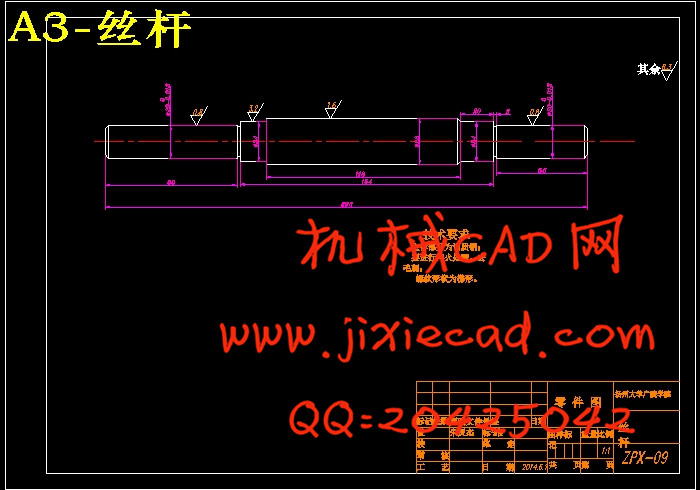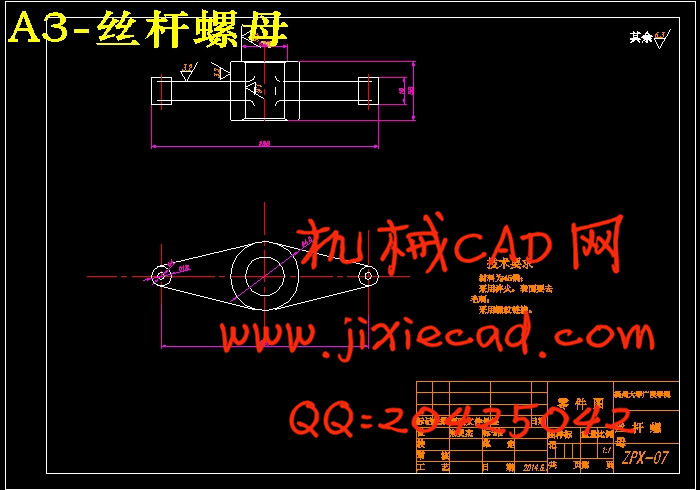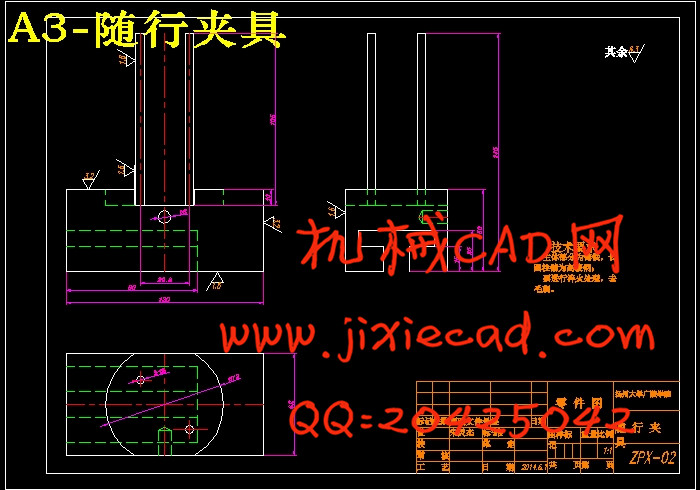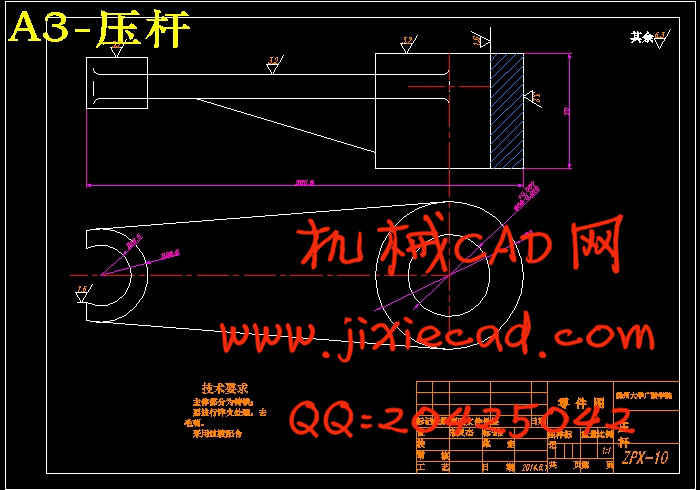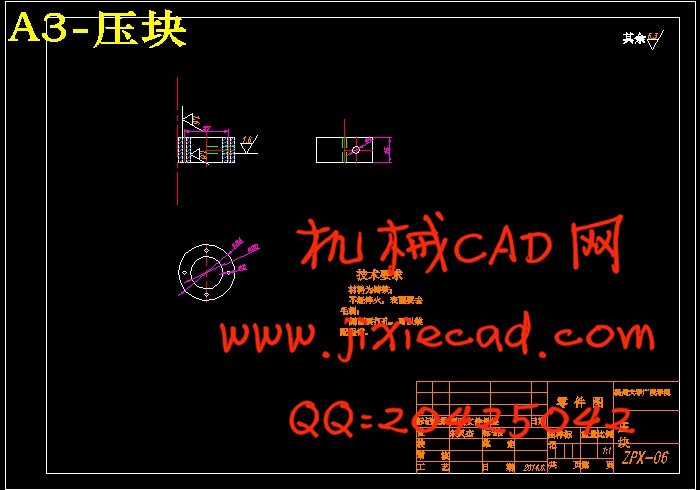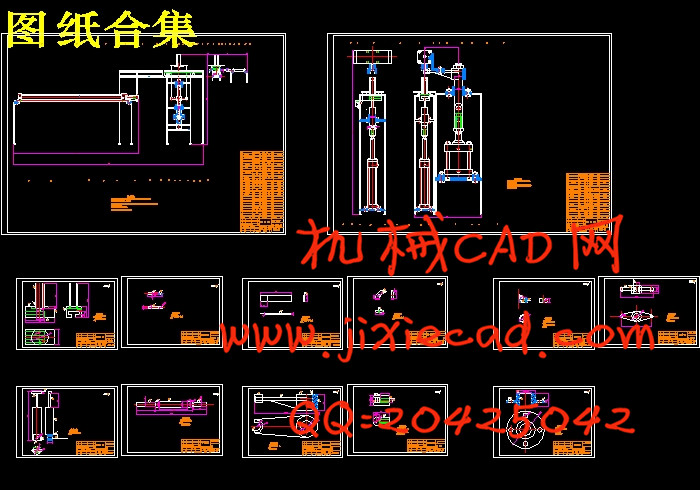设计简介
摘要
汽车发动机在高速运转时发热量非常大,尤其针对大功率发动机,因此,汽车发动机高温运转时对其润滑系统的可靠性要求比较高。而机油冷却器可以维持发动机工作时润滑系统的稳定性、提高可靠性和寿命、降低发动机自身的制造精度,对于车载发动机是必不可少的配套装置。随着我国现代化进程的加快,汽车行业的迅猛发展,机油冷却器在市场中的需求将会随之增加,圆盘式机油冷却器由于其结构、性能的优势,需求更是加大。
机油冷却器的装配工艺过程是制造过程中的重要环节,装配质量的好坏直接影响机油冷却器的密封性能。由于机油冷却器结构特点限制,国内外长期以来一直靠人工操作,且效率低、劳动量大,装配质量受到人为因素的影响,降低了机油冷却器质量的稳定性和可靠性。随着企业用户需求量的增加,基于机油冷却器的结构特点限制,完全采用自动化装配是不现实的。因此在原本的手工装配线上,开发一条半自动化装配线。这既可以提高机油冷却器的装配质量,又可以降低劳动力节约成本。自动装配线由机械系统(装配输送线、装配机械手、定位装置、压紧设备等)、气压系统、电气系统和PLC控制系统等部分组成,无疑它将是机电一体化的产品。
关键词:机油冷却器、自动化装配线、传送装置
Abstract
Automobile engine in high-speed operation when the heat is very large, especially for large power engine, therefore, the automobile engine high-temperature operation reliability of the lubrication system requirements are relatively high. And the oil cooler can stability, maintain the engine lubricating system to improve the reliability and service life, reduce the manufacturing precision of the engine itself, for vehicle engine is an essential supporting device. With the accelerated process of modernization, the rapid development of automobile industry, the demand in the market will increase the disk type oil cooler, oil cooler due to its structure, performance, demand is increasing.
Oil cooler assembly process is an important link in the manufacturing process, assembly quality directly impact on the oil cooler sealing performance. Due to the limitation of the oil cooler structure characteristics, both at home and abroad has long been a manual operation, and low efficiency, large amount of labor, the assembly quality is affected by human factors, reducing engine oil cooler the quality stability and reliability. With the increasing user demand, limiting structure characteristics of oil cooler based, fully automated assembly is not realistic. So in the manual assembly line originally, development of a semi automated assembly line. It can not only improve the assembling quality of oil cooler, but also can reduce the labor cost savings. The automatic assembly line by mechanical system (assembly line, robot assembly, positioning device, clamping device and so on), pressure systems, electrical systems and PLC control system components, it is the integration of mechanical and electrical products.
Keywords: oil cooler, automatic assembly line, transport device
摘要 1
第一章 绪论 3
引言 3
1.1课题的来源、意义及主要内容 3
1.1.1课题的来源 3
1.1.2课题的意义 4
1.1.3课题的主要内容 4
1.2装配线传送装置的概述 4
1.2.1连续式传送 5
1.2.2间歇式传送 5
1.3装备自动化简介 6
1.3.1装配自动化的简史 6
1.3.2装备自动化在国内外的发展状况 6
1.3.3装配自动化的目的与要求 7
1.3.4装配自动化的发展方向 7
1.3.5装配自动化的意义 8
第二章 装配线总体方案设计 10
2.1圆盘式机油冷却器自动装配线的设计要求 10
2.2装配方案设计 10
2.2.1机械手工艺分析与确定 11
2.2.2工位工艺分析与确定 12
2.2.3压紧工位工艺分析与确定 12
2.3装配线传送方案比较与确定 12
2.3总体方案的确定 13
第三章 压紧工位装备设计 15
3.1机油冷却器定位方案的分析与确定 15
3.2机油冷却器夹紧方案的分析与确定 16
3.3随行夹具与装配体的分离 18
3-4气缸的设计与选用 19
3.4.1气缸的概述 19
3.4.2气缸的组成 20
3.4.1气缸的选择 21
3.3.2气缸的安装形式 22
3.5导轨的设计与选用 22
3.5.1导轨的设计要求 22
3.5.2导轨设计程序及内容 22
3.5.3导轨的类型 23
3.6输送杆设计 25
3.7棘爪的设计和确定 25
3.8弹簧的设计与选用 25
3.8.1弹簧的分类 25
3.8.2弹簧的选取 26
3.9滑动丝杠螺母副的设计、计算以及确定 27
3.10轴承及其端盖、密封件和套杯的选择 28
3.10.1概述 28
3.10.2滚动轴承的类型与特点 28
3.10.3圆锥滚子轴承的选取 29
3.10.4端盖、密封件和套杯的选择 29
3.11电机的选择 30
3.12联轴器的设计与确定 32
3.12.1联轴器的概述 32
3.12.2联轴器的分类 32
3.13定位支撑板的设计与确定 34
3.14定位销的设计以确定 34
第四章 压力机的设计 35
4.1方案设计 35
4.2气缸的设计和选择 35
4.2.1压紧气缸的设计与选择 35
4.2.2抽头气缸的选择与确定 37
4.2.3摆动气缸的选择与确定 37
4.3压紧工位支架的设计 38
4.4压力机压头的设计 38
4.4.1压杆的设计 38
4.4.2摆动支架的设计 39
4.4.3转块的设计 39
4.4.4压块的设计 40
4.5导套的设计 41
4.6气缸连接件 42
总 结 43
致 谢 44
参考文献 45
汽车发动机在高速运转时发热量非常大,尤其针对大功率发动机,因此,汽车发动机高温运转时对其润滑系统的可靠性要求比较高。而机油冷却器可以维持发动机工作时润滑系统的稳定性、提高可靠性和寿命、降低发动机自身的制造精度,对于车载发动机是必不可少的配套装置。随着我国现代化进程的加快,汽车行业的迅猛发展,机油冷却器在市场中的需求将会随之增加,圆盘式机油冷却器由于其结构、性能的优势,需求更是加大。
机油冷却器的装配工艺过程是制造过程中的重要环节,装配质量的好坏直接影响机油冷却器的密封性能。由于机油冷却器结构特点限制,国内外长期以来一直靠人工操作,且效率低、劳动量大,装配质量受到人为因素的影响,降低了机油冷却器质量的稳定性和可靠性。随着企业用户需求量的增加,基于机油冷却器的结构特点限制,完全采用自动化装配是不现实的。因此在原本的手工装配线上,开发一条半自动化装配线。这既可以提高机油冷却器的装配质量,又可以降低劳动力节约成本。自动装配线由机械系统(装配输送线、装配机械手、定位装置、压紧设备等)、气压系统、电气系统和PLC控制系统等部分组成,无疑它将是机电一体化的产品。
关键词:机油冷却器、自动化装配线、传送装置
Abstract
Automobile engine in high-speed operation when the heat is very large, especially for large power engine, therefore, the automobile engine high-temperature operation reliability of the lubrication system requirements are relatively high. And the oil cooler can stability, maintain the engine lubricating system to improve the reliability and service life, reduce the manufacturing precision of the engine itself, for vehicle engine is an essential supporting device. With the accelerated process of modernization, the rapid development of automobile industry, the demand in the market will increase the disk type oil cooler, oil cooler due to its structure, performance, demand is increasing.
Oil cooler assembly process is an important link in the manufacturing process, assembly quality directly impact on the oil cooler sealing performance. Due to the limitation of the oil cooler structure characteristics, both at home and abroad has long been a manual operation, and low efficiency, large amount of labor, the assembly quality is affected by human factors, reducing engine oil cooler the quality stability and reliability. With the increasing user demand, limiting structure characteristics of oil cooler based, fully automated assembly is not realistic. So in the manual assembly line originally, development of a semi automated assembly line. It can not only improve the assembling quality of oil cooler, but also can reduce the labor cost savings. The automatic assembly line by mechanical system (assembly line, robot assembly, positioning device, clamping device and so on), pressure systems, electrical systems and PLC control system components, it is the integration of mechanical and electrical products.
Keywords: oil cooler, automatic assembly line, transport device
摘要 1
第一章 绪论 3
引言 3
1.1课题的来源、意义及主要内容 3
1.1.1课题的来源 3
1.1.2课题的意义 4
1.1.3课题的主要内容 4
1.2装配线传送装置的概述 4
1.2.1连续式传送 5
1.2.2间歇式传送 5
1.3装备自动化简介 6
1.3.1装配自动化的简史 6
1.3.2装备自动化在国内外的发展状况 6
1.3.3装配自动化的目的与要求 7
1.3.4装配自动化的发展方向 7
1.3.5装配自动化的意义 8
第二章 装配线总体方案设计 10
2.1圆盘式机油冷却器自动装配线的设计要求 10
2.2装配方案设计 10
2.2.1机械手工艺分析与确定 11
2.2.2工位工艺分析与确定 12
2.2.3压紧工位工艺分析与确定 12
2.3装配线传送方案比较与确定 12
2.3总体方案的确定 13
第三章 压紧工位装备设计 15
3.1机油冷却器定位方案的分析与确定 15
3.2机油冷却器夹紧方案的分析与确定 16
3.3随行夹具与装配体的分离 18
3-4气缸的设计与选用 19
3.4.1气缸的概述 19
3.4.2气缸的组成 20
3.4.1气缸的选择 21
3.3.2气缸的安装形式 22
3.5导轨的设计与选用 22
3.5.1导轨的设计要求 22
3.5.2导轨设计程序及内容 22
3.5.3导轨的类型 23
3.6输送杆设计 25
3.7棘爪的设计和确定 25
3.8弹簧的设计与选用 25
3.8.1弹簧的分类 25
3.8.2弹簧的选取 26
3.9滑动丝杠螺母副的设计、计算以及确定 27
3.10轴承及其端盖、密封件和套杯的选择 28
3.10.1概述 28
3.10.2滚动轴承的类型与特点 28
3.10.3圆锥滚子轴承的选取 29
3.10.4端盖、密封件和套杯的选择 29
3.11电机的选择 30
3.12联轴器的设计与确定 32
3.12.1联轴器的概述 32
3.12.2联轴器的分类 32
3.13定位支撑板的设计与确定 34
3.14定位销的设计以确定 34
第四章 压力机的设计 35
4.1方案设计 35
4.2气缸的设计和选择 35
4.2.1压紧气缸的设计与选择 35
4.2.2抽头气缸的选择与确定 37
4.2.3摆动气缸的选择与确定 37
4.3压紧工位支架的设计 38
4.4压力机压头的设计 38
4.4.1压杆的设计 38
4.4.2摆动支架的设计 39
4.4.3转块的设计 39
4.4.4压块的设计 40
4.5导套的设计 41
4.6气缸连接件 42
总 结 43
致 谢 44
参考文献 45


